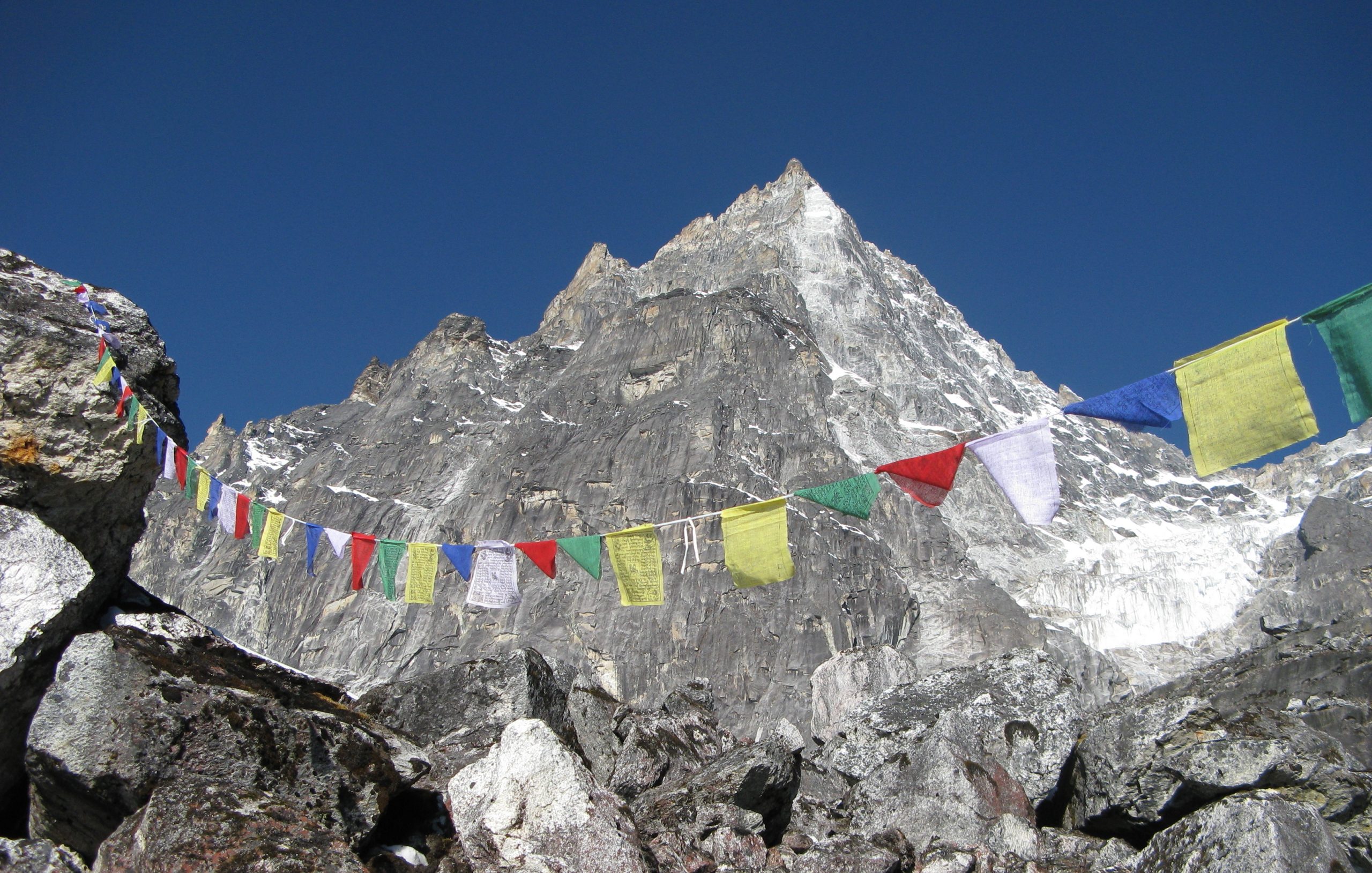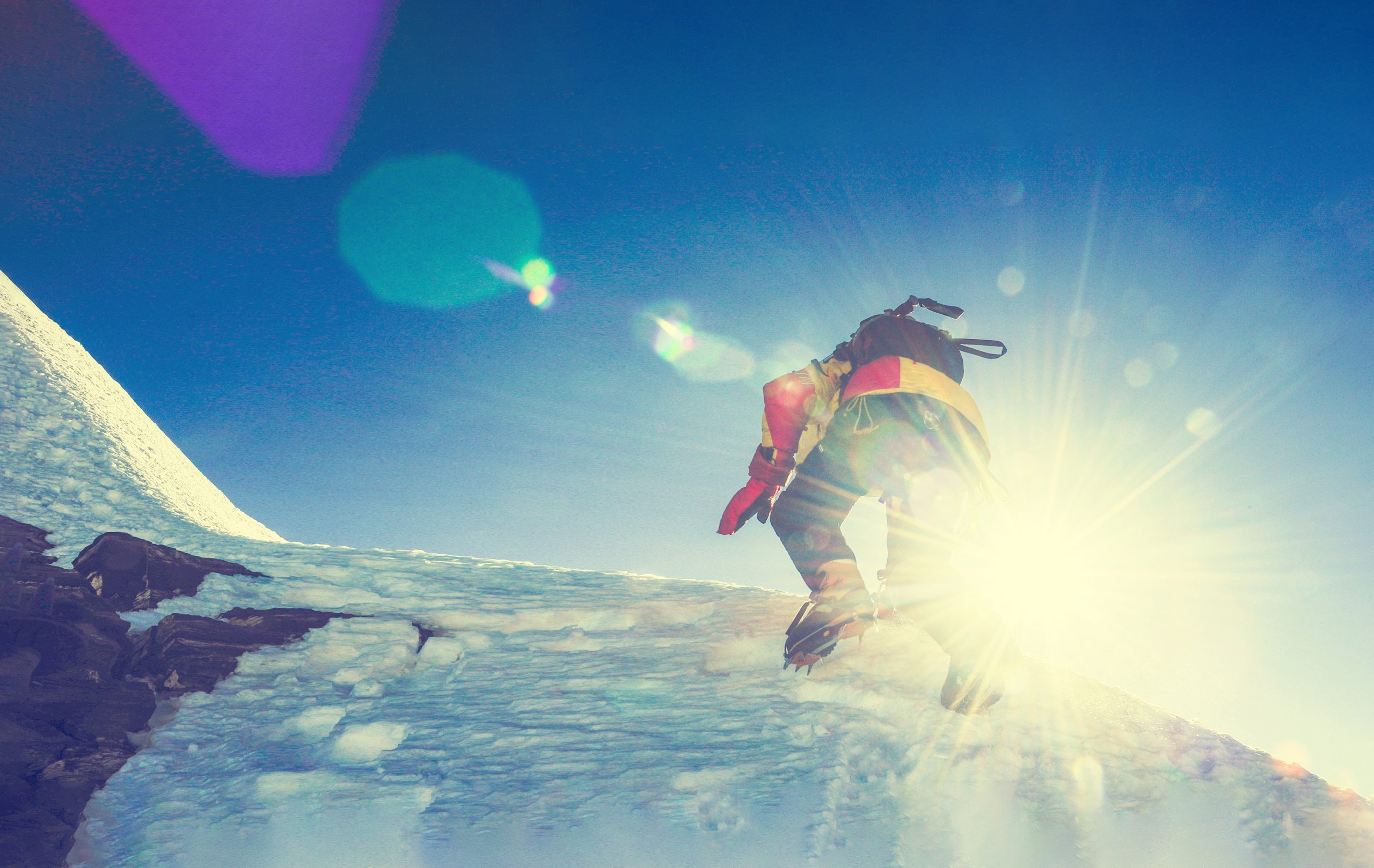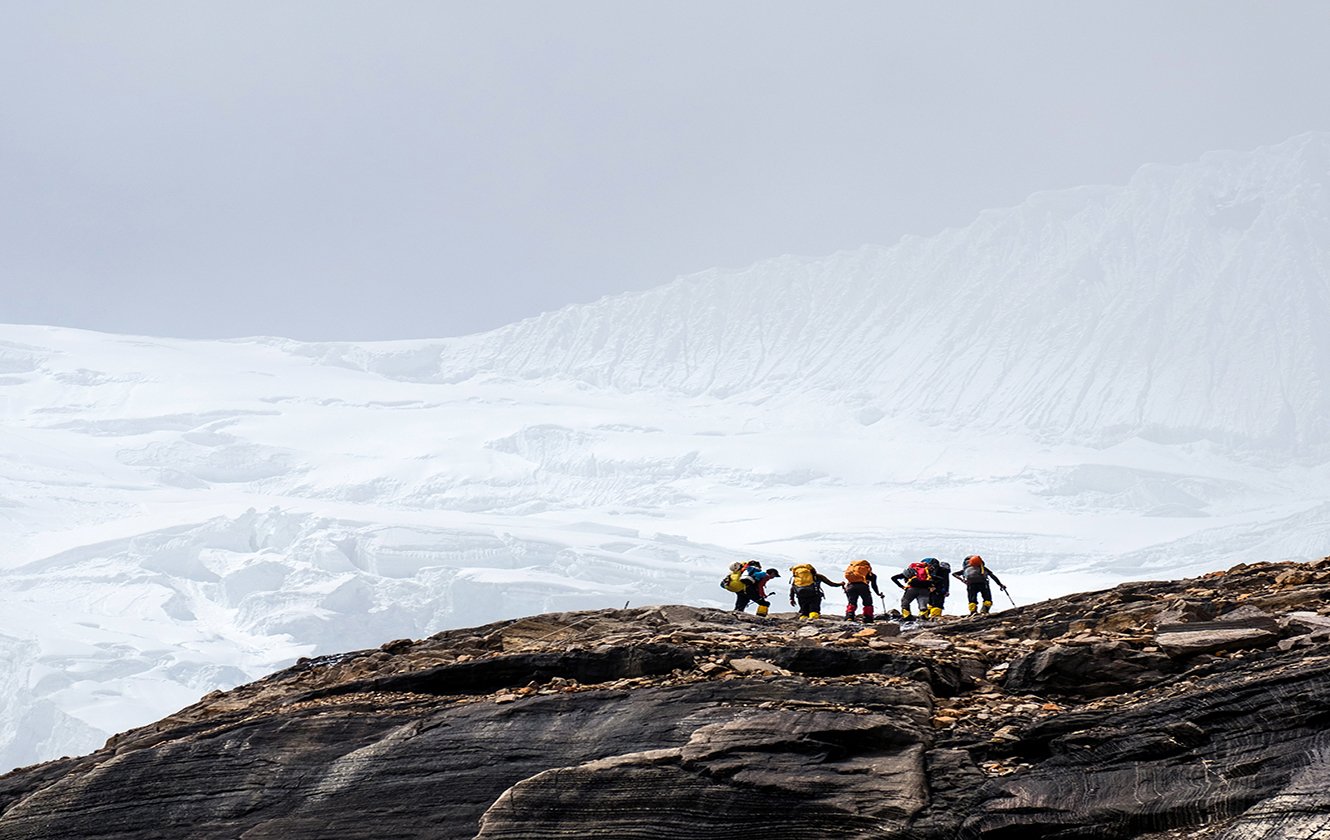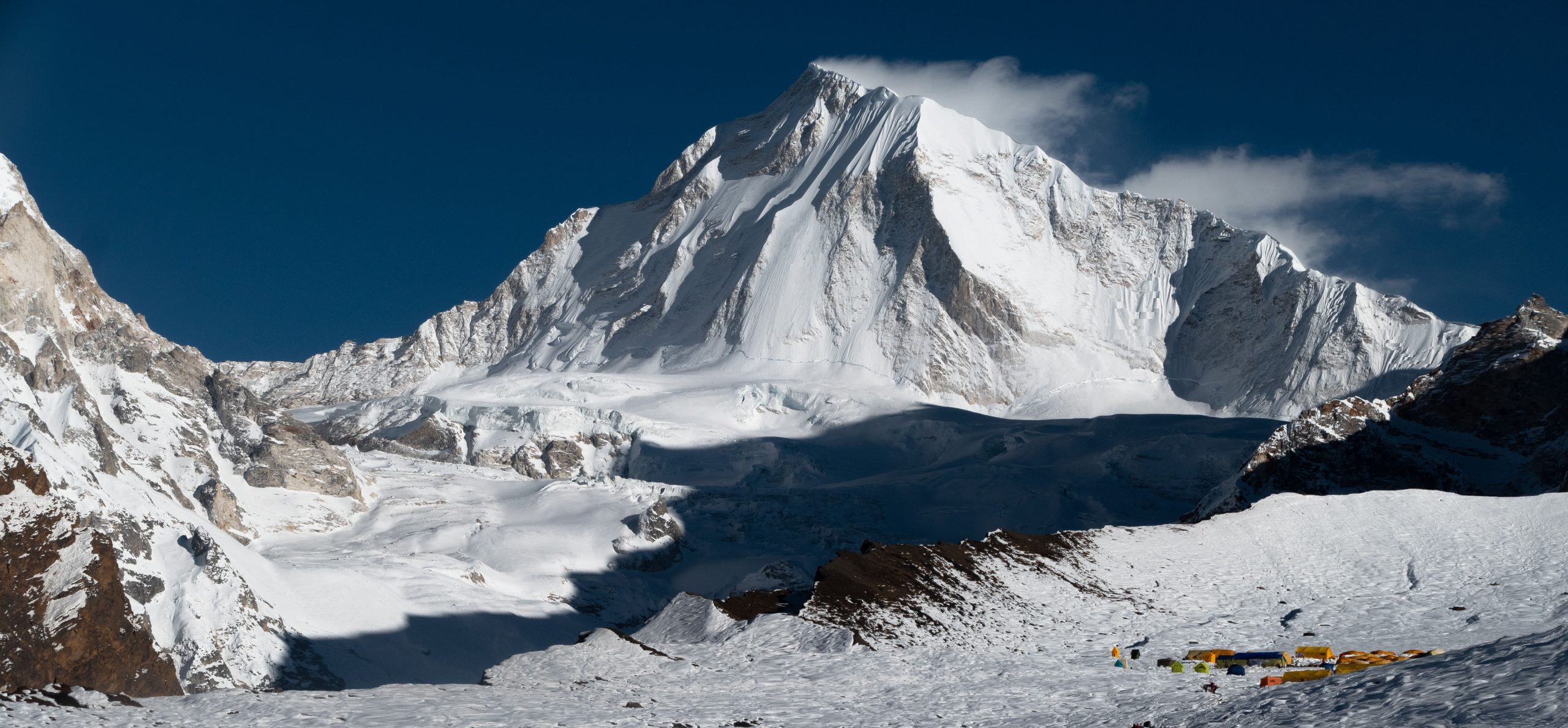
HIMLUNG HIMAL – 7,126 m / 23,373 ft.
- Home /
- Nepal /
- Peak Climbing & Expeditions /
- HIMLUNG HIMAL – 7,126 m / 23,373 ft.
Himlung-Himal, commonly known as Himlung, is a popular peak in Nepal, standing at an elevation of 7126 m/23,380 ft. It is one of the most famous expedition among the 7000-meter peaks. Situated in the Nar-Phu region, a remote and restricted area near the Tibet border, special trekking permits are required for explorers venturing into this area.
The Asiatic Roads Team can assist climbers who want to experience high-altitude mountaineering for the first time or are preparing for 8,000m peaks. While the climb isn’t overly technical, there are a few short steep sections, which the experienced Asiatic support team ensures are secure. However, climbers must possess a high level of fitness.
The route from the Base Camp, located at 4,850 meters above sea level in the pastures of Phu village, offers a beautiful alpine experience. To reach the Summit, climbers typically set up three high camps: Camp I at 5,450 meters, Camp II at 5,800 meters, and Camp III at 6,350 meters.
Aside from the thrilling high-altitude mountaineering, the region’s charm lies in its ancient architecture, customs, culture, and diverse wildlife. The journey to the Base Camp is filled with awe-inspiring sights, including high peaks, the secluded Phu village, narrow gullies, lush forests, natural springs, historic monasteries, and unique ancient settlements.
Itinerary In Detail
-
01: Day 01: Arrival in Kathmandu (1,400 m / 4,592 ft.)
Upon arrival in Katmandu’s Tribhuvan International Airport, meet, assist and transfer to hotel. After welcome refreshments and room check in the hotel, there will be a short briefing and orientation about your program. Rest of the day is free for rest & refreshment.
Eve: Welcome dinner followed by trek briefing.
Overnight at hotel in Kathmandu.
-
02: Obtain Expedition permit and drive to Kurintar (100 km) - 3~4 hours
Am: Morning for leisure, meantime you have a time for the trek preparation, you can also go to Thamel if you are running short of any gears. Meanwhile we will submit application to obtain special restricted area trek permits at Department of Immigration.
Pm: Obtain trek permit and start drive to Kurintar, which may takes around 3~4 hours depending on the traffic. Upon arrive check in at Riverside Resort. Rest of the day is for leisure.
Dinner and overnight Resort.
-
03: Drive to KOTO (2,600 m / 8,528 ft.) village via Besishahar (141 Km) -6~7 hours.
After breakfast, check out and start drive Besi Sahar (823 m) which is the headquarter of Lamjung district. After Beshishahar it is unpaved mountain road along the Myarshyangdi River en-route we will stop in a scenic village for lunch. After lunch continue drive to Koto our base for the trek up to Nar and Phu, we can look straight up at nearby Annapurna II – a stunning sight convincing us that we are deep in the Himalayan Mountains! Koto Qupar. The villagers are mostly from Nar and Phu and this is the gateway to their region.
Eve: Time permitting walk up to Chame Bazaar and stroll around local market.
Dinner and overnight at Teahouse lodge.
-
04: Trek to Dharamsala (3,230m / 10,595 ft.) - 7 hours.
This morning we head out early, as we have a long and somewhat difficult day before us. Just past the checkpost, we cross the river leading to the Nar Phu valleys, and hike up through beautiful woods above the Phu Khola (river). The route takes us through some beautiful woods and past several small shelters (caves) and a pilgrims’ ‘dharmasala’. As we emerge out of a narrow canyon, the trail actually passes under a wide waterfall just before the Dharmasala, from which point the woods become thinner and the vistas wider. A stunning start for the Nar Phu trek! We camp at the dharamsala, a lovely campsite.
Overnight at camp or teahouse lodge.
-
05: Trek to Kayang (3,740m /12,267 ft.) – 6 hours.
A steep climb up the valley along a small, Scenic River brings us finally to high pastures on a 3,200m plateau. We pass by the scenic kharka of Meta, 3,560m, a non-permanent winter settlement of Nar, where we will probably share the trail with a few yaks! This morning is one of the loveliest walks in the Himalayas. The landscape is similar to the Sierra Nevada; white rocks, low shrub and juniper, scattered evergreens, delicate brick-red and orange leafed bushes, crumbling shelves of flat slate, white, sandy trails and knarled trees.
The mountains around us are utterly spectacular, and the Phu Kosi shadows the trail far below. An hour past Meta, Junam is the second semi-permanent settlement, one where “khampas” from Tibet sometimes sheltered. Above the kharka to the right looms a massive glacier, which falls jaggedly down to the high pastures above us. It’s all truly amazing scenery. Across the river, the cliffs contort in swirls and waves, similar to Ladakhi landscapes.
The next semi-permanent settlement is Chako, formerly a Khampa settlement, where grass lies tied in bunches to dry on all the rooftops and prayer flags flutter in the breeze. Last year we saw a massive yak caravan from Phu pass by at Chako on their way down to Manang to re-supply. A scene from old Tibet! Many more ups and downs take us to tonight’s campsite at Kyang, the extensive winter settlement of Phu, on a plateau high above the river.
Overnight at camp or teahouse lodge.
-
06: Trek to Phu (4,050m / 13,284 ft.) – 5~6 hours.
Dropping steeply down to the river, we trek for a while along the river bank and past the “submarine” rock, passing some small possible campsites along the way. Today, we really start to see some of the unique, colorful chortens for which Nar and Phu are justly famous. We have to rock-hop carefully across a small glacial stream before reaching a larger one with a bridge only half covered with large slabs of slate. Some large steps do the trick! Another hour and a half of trekking through scenic canyonlands and gorges, and the “leaning tower of Pisa” monolith guards the steep trail up to the Phu gate, called Pupigyal Kwe. This ancient gate provides us with our first view of the three villages of Phu, as well as an old “dzong” and the remains of two forts, all now in ruins, but impressively situated atop the flatlands before Phu. Just before the bridge to Phu, a line of wonderful chortens color the landscape and lead the way to the main village of Phu, perched high up on a hill, amphitheater style. We will set up camp on the lower reaches of Phu, formerly called Gomdzong, and head up to the famous Tashi Lhakhang Gompa on a neighboring hillside to pay our respects to Lama Karma Sonam Rimpoche, a “trulku” who came to Nepal with HH the Dalai Lama back in ’59. He is also a renowned “amchi” or Tibetan doctor, as well as a thanka painter and father of several children (some “trukus” as well as certain lamas are permitted to marry). Later, we might head up to the village to hunt down some chang.
Overnight at camp or teahouse lodge.
-
07: Rest and acclimatization day in Phu.
Spend a day in Phu for acclimatization, meet the local Phu residents and do some exploring up the wide valley systems above us. Tibet is two long days away, so a bit far for a visit, but we might walk up the valley to the summer grazing settlement, or “kharka” at Ngoru, a three hour’s walk past the gompa. Phu itself is an incredibly interesting village, and a day is well spent sitting with the villagers as they spin their yak and sheep wool and chat, pound mustard seeds into a paste for oil, or involve themselves in the countless activities that take up a day in Tibetan villages. For photographers, the light is spectacular, and the skies a deep blue and we may even see some blue sheep on the surrounding hillsides.
Overnight at camp or teahouse lodge.
-
08: Trek to Himlung Base Camp (4,850 m / 15,908 ft.) - 4 hrs.
After breakfast, start hike to Himlung Base Camp for lunch. Rest of the day is free to get familiar with entire expedition support team.
Dinner and overnight at Camp.
-
09 to 22: Acclimatization & Climbing period
During the summit period our team will set up three camps above Base Camp I at 5,450 meters, Camp II at 5,800 meters, and Camp III at 6,350 meters.
-
23: Backtrack to Phu
Backtrack to Phu.
Dinner and overnight at lodge.
-
24: Backtrack to Koto.
Backtrack to Koto.
Dinner and overnight at Camp.
-
25: Drive back to Kurintar
Start return drive to Kurintar.
Overnight at Resort.
-
26: Drive back to Kathmandu.
Drive back to Kathmandu. Rest of the day is for leisure.
Overnight at hotel.
-
27: Contingency day in Kathmandu.
Spend a contingency day in Kathmandu in the event of delay.
Eve: Group farewell dinner.
Overnight at hotel.
-
28: Final departure
Free until final departure transfer to Kathmandu’s International Airport.

Any Question?
Feel free to call our travel experts.
+977 9851189018, +977 9801089018
info@asiaticroads.com

Any Question?
Feel free to call our travel experts.
+977 9851189018, +977 9801089018
info@asiaticroads.com

Any Question?
Feel free to call our travel experts.
+977 9851189018, +977 9801089018
info@asiaticroads.com
Reviews
In my 2 week stay, John was very professional and took me around to experience all that Kathmandu and surrounding areas has to offer. Sites were seen and many locals were met through John’s network.

Steven Stone
TravellerIn my 2 week stay, John was very professional and took me around to experience all that Kathmandu and surrounding areas has to offer. Sites were seen and many locals were met through John’s network.

Steven Stone
Traveller
